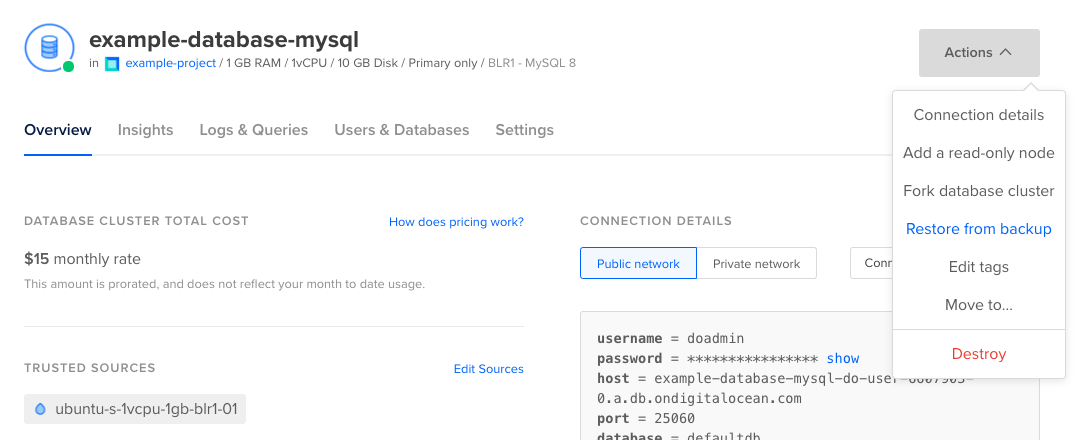How to Manually Restore OpenSearch Database Clusters from Backups
OpenSearch is an open-source search and analytics suite which serves as a centralized location to manage logs forwarded from other resources, such as databases and Droplets.
DigitalOcean Managed Databases automatically handle recovery from hardware and software failures by replacing degraded nodes with new ones that resume directly from the point of failure. To recover from situations like a database administrator or application accidentally destroying data, you can manually restore a OpenSearch database cluster from backups.
When you restore from a backup, we create a new copy of your cluster’s primary node. You cannot restore directly into the primary node itself because this creates alternative timelines for the database that introduce unwarranted complexity in a managed service. By restoring into a new primary node, a single linear timeline history is preserved.
OpenSearch cluster backups are automatically created once per day and retained for 7 days. Backups do not result in downtime or performance degradation. The time of day at which backups run is set automatically by DigitalOcean and you cannot change it.
Restore a OpenSearch Cluster from Backups
To restore from a backup, from the Databases page, click the name of the OpenSearch database you want to restore to go to its Overview page, then click the Actions button and choose Restore from backup from the menu.

In the Create a new cluster from a backup window, choose whether you want to restore to the latest transaction available or choose a point in time. Then, choose a name for the new database. By default, the name is the original database’s name appended with the date of the backup and the word “backup”, for example originalname-aug-13-backup.
When you’re ready, click Restore to New Cluster to begin the restoration. The time it takes to create the new cluster depends on the amount of data in the original.